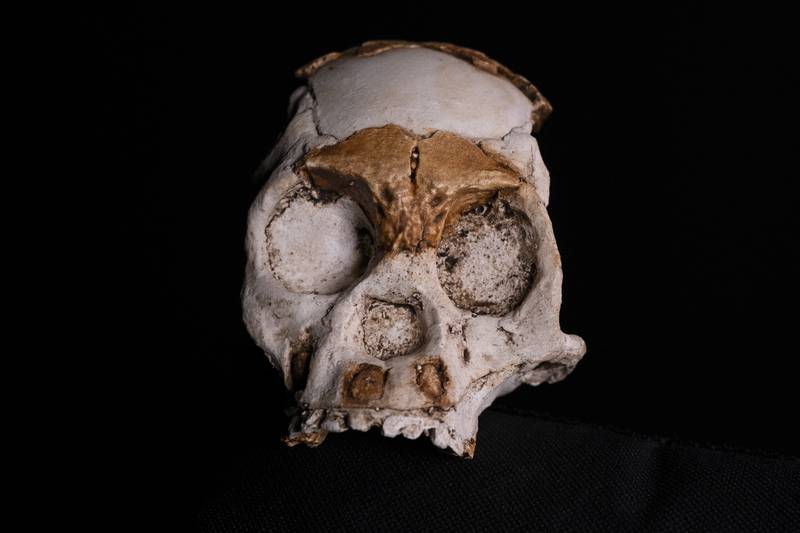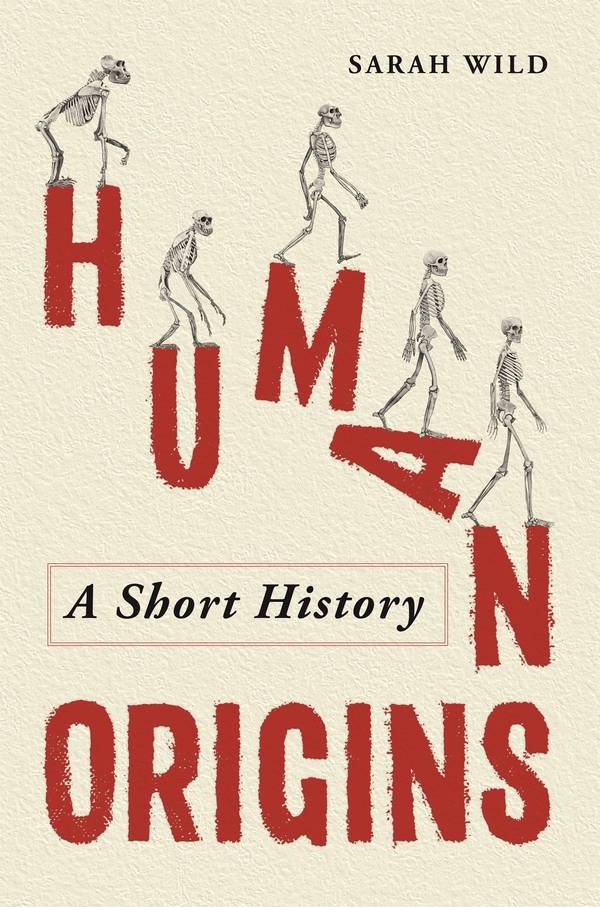
This is an edited extract from Sarah Wild’s new book ‘Human Origins’
The post Making no bones of science appeared first on The Mail & Guardian.

A slight genetic tweak millions of years ago eventually gave rise to humans and changed the trajectory of our planet.
All living organisms contain DNA, a molecular blueprint that children inherit from their parents. Sometimes genetic information changes slightly as it is passed on. Often these mutations mean nothing — a tiny blip in the complex, long code of life — but over time and in successive generations, the changes can accumulate and set plants and animals on a different evolutionary path from their ancestors.
As time passes and juveniles grow into adults that have offspring of their own, a species can change permanently, developing into a different sub-species or even — over multiple generations — a new species altogether.
Salamanders which fell into a cave in Slovenia many years ago lost their skin colour and sight, and their snouts got longer. Today, we know these populations as the European olm. Meanwhile, on the Galapagos Islands, finches developed differently shaped beaks, depending on the food they could access. These small, superficial changes help animals adapt to altered environments.
But over the course of millennia, evolutionary modifications can transform one species into another.
Human evolution studies tend to focus on the evolutionary fork in the road, between five and nine million years ago, when humans and chimps parted ways. But in reality, the slow accumulation of changes had been taking place long before then. Many key genetic events had been set in motion millennia prior to our hominin ancestors walking upright.
The traits that make humans, well, human — our short thumbs adapted to grasping, hip sockets that sit firmly in our pelvis and allow us to put one foot in front of the other, and giant brains capable of introspection and music and art — had been millions of years in the making.
Today, if you were to lie chimp and human skeletons side by side, it would be easy to spot the differences. For one (important) thing, you would most likely have two complete skeletons, something palaeoanthropologists dream of and seldom have.
The physical contrasts are significant. But between nine and five million years ago, the differences between members of the chimp and hominin lineages would have been subtle. Our early hominin ancestors would have only had a few of the attributes we recognise as characteristic of hominins (as opposed to the full suite of attributes). This makes separating early hominins from early chimpanzees quite difficult.

Millions of years ago, the landscape looked very different to how it does today. Throughout Earth’s history, its polar ice caps have frozen, thawed and frozen again. They have trapped millions of cubic kilometres of fresh water in their icy depths, and when the climate heated again, this water flooded the oceans. Innumerable forests have risen up from saplings, rotted into mulch and given way to grasslands. The continents themselves have shifted, raising mountains and buckling landscapes, while volcanoes have covered the land with boiling, mineral-rich lava and ash.
The changeable landscape has very important implications for fossil-hunting. When creatures begin the long process of fossilisation, they mostly become trapped in a sediment layer (although there are notable exceptions, such as creatures that fall into bogs and become naturally mummified). Layers of soil, ash and mud cover their bodies, and the chemical composition of these layers can make them easier to find and date.
There are two major regions for early hominin fossil-hunting — South Africa and eastern Africa —and this is mainly due to their fortunate geology.
In South Africa, about 50 kilometres north-west of Johannesburg, there is a treasure trove of hominin fossil sites. Collectively referred to as the ‘Cradle of Humankind’ by the government, the area, with its green rolling hills, was listed as a Unesco World Heritage Site in 1999. It only covers about 10 kilometres by 15 kilometres — a tenth of the size of London — but it is one of the richest hominin sites in the world. Palaeoanthropologists have found numerous early hominin skeletons (which are in fact remarkably rare globally), artefacts and animal remains at the sites, which have contributed greatly to our understanding of human evolution.
About 2.3 billion years ago, that area was a large, warm inland sea, home to a burgeoning community of coral reefs. The calcium and magnesium in the ocean and marine life laid the foundations for the dolomitic rock that forms part of the Cradle’s geology, and is what has made it such a wellspring of discovered fossils.
There are two reasons for this. One, limestone (which is calcium carbonate) is often found with dolomite, and in the nineteenth century, lime (calcium oxide, a derivative of limestone) was a much-traded commodity in South Africa, where rapidly developing colonial communities used it as a mortar to stick bricks together in buildings. Limestone mining was big business, and in fact some key hominin fossils, such as the Taung Child (Australopithecus africanus) and Little Foot, were discovered because miners blasted dolomite with dynamite in search of limestone.
The second reason for the Cradle’s wealth of uncovered fossils is that water can dissolve limestone. This erosion forms cavities and caves within the rock. For many unfortunate creatures, a wrongly placed foot meant a fall into vertical shafts that water had gnawed into the rock underfoot, and a plummet into inescapable subterranean caverns below. For example, at Malapa, a rocky site populated by the odd tree and surrounded by the Cradle’s grassy hills, there is a cave which contains hominin and animal fossils, none of which have the telltale signs of a carnivore’s teeth. There are more than twenty-five species represented among Malapa’s remarkable hoard, and these creatures most likely fell to their death through treacherous chasms millions of years ago.

We use fossils as signposts in the story of human evolution, and in the last few decades palaeoanthropologists have become increasingly aware of the bias in the fossil record, as well as their own bias, and are now trying to correct this.
There are physical realities that distort our understanding of the human narrative. For one thing, we seldom find whole skeletons. Some parts of a hominin skeleton are simply more durable than others, so we find more enamel-encased teeth than fingers. Hands and feet are more likely to be scavenged or washed away than, say, a skull. A muscle-clad thighbone may also be tastier to a predator than a bony skull. What this means is that certain parts of the skeleton are better represented in the fossil record, and so we place more emphasis on their evolution because we understand them better.
Some environments are also more conducive to the preservation of fossils. The fortuitous geology of eastern and South Africa has preserved skeletons and artefacts for millions of years, but there were hominins or possible last common ancestors in other places in Africa too.
Another important possible bias was introduced by Charles Darwin in his 1871 book, The Descent of Man, and Selection in Relation to Sex. In that work, he noted that modern humans more closely resembled African apes than their Asian counterpart, the orangutan. Thus, Darwin theorised, humans most likely evolved in Africa. This supposition has guided palaeoanthropology’s focus on Africa as the birthplace of humans. So far, the fossil record backs up Darwin’s speculation, but it is possible that the human story is more complex than we currently think it to be.
Sarah Wild is an award-winning science journalist. Human Origins is her fourth full-length science book and is published by Michael O’Mara.
The post Making no bones of science appeared first on The Mail & Guardian.